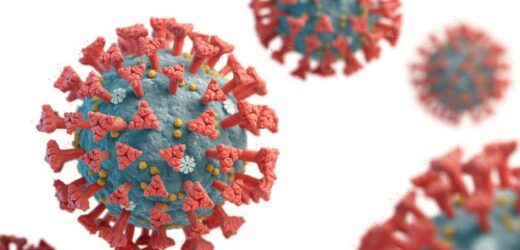Examine, a weekly newsletter covering the latest developments in science, is sent every Tuesday. Below is an excerpt – sign up to get the whole newsletter in your inbox.
For some, news of new COVID-19 variants, which appear to have formed when different strains of the virus combine, sounds like a worst-case scenario. And it’s little comfort that they have appeared as many of Australia’s measures to control the pandemic are being wound back, including reopening our borders to more and more of the world.
Rather than a cause for concern, new “hybrid” variants of COVID-19 could point the way out of the pandemic, experts say.Credit:
But experts say while the new variants should be watched closely, they could be an indication that the virus is finally settling into a more manageable form.
What is ‘Deltacron’?
Much has been made in the past few weeks about a potential strain of the virus, detected in the northern hemisphere, which has been dubbed “Deltacron” because it appears to be a hybrid of the Delta and Omicron variants.
Infectious diseases expert Professor Robert Booy from the University of Sydney says it is not unusual for different strains of the same virus to combine into new forms. “[Deltacron] arises through someone having a dual infection with both variants and then an exchange of genetic material occurring between viruses,” he says.
The hybrid was first detected by scientists in Paris in February and has since appeared in other parts of Europe as well as the US. However, there is not just one single strain but several, which indicates that Delta and Omicron have been combining independently in different parts of the world.
To date, only a relative handful of cases of the hybrid variants have been recorded worldwide, says infectious diseases expert Professor Nigel McMillan from Griffith University. “It’s really tiny numbers, and in some ways it’s just a waiting game now to see whether they become more prominent or disappear.”
How worried should we be?
The evidence now indicates that Omicron, in both its recognised forms, is less severe than Delta but more transmissible than previous strains of the coronavirus – it spreads more easily but causes milder disease.
There are some suggestions that the hybrid strain may have the severity of Delta and the infectiousness of Omicron, which would be worrying. However, McMillan says these theories should be taken with a grain of salt as the data sets are still too small to draw conclusions. While he says there’s no reason why the virus might not become more lethal again, that does not appear to be the case in this instance.
A traveller receives a COVID-19 test at a testing clinic.Credit:Brendon Thorne/Bloomberg
Booy says all viruses mutate and evolve, and scientists will be keeping a close eye on Deltacron and any other variants that crop up in the coming months. “Whether the virus mutates into a variant of concern, which is more transmissible, more pathogenic or more evading of our immune system, remains to be seen,” he says.
What is reassuring virologists the world over is the fact that the spike protein on the hybrid strains appears to be very similar to Omicron. Vaccines which target the coronavirus spike protein have proven effective against Omicron and as such would likely be effective against this new hybrid.
Where are we heading?
Australia is counting on the fact that much of the population has either had the virus, most likely Delta or Omicron, or has good vaccination coverage against it, or both. That gives most people good protection against the known forms of the virus, even Omicron, which is markedly different from the original Wuhan strain.
Since the pandemic began, there has been talk of the possibility that COVID-19 will eventually settle down into something more like a seasonal flu.
Last week the World Health Organisation revealed three possible scenarios for how the world might finally emerge from the emergency phase of the pandemic. In the most likely scenario, WHO modellers predict the virus will continue to evolve, while the severity of disease it causes will reduce over time.
McMillan believes the Deltacron variants indicate that this scenario is already playing out. “The further on we go, the further the virus has pushed itself to its end in terms of its potential to be deadly,” he says. “I would be very surprised if at this stage we saw a sudden shift back to the virus being more deadly. I think we’ll see very small, incremental changes from here on.”
Booy agrees, but both experts say maintaining vigilance against the virus will be crucial, even as control measures are rolled back. “Surveillance of both people and virus is the key to managing this going forward,” Booy says. “Getting sequencing done on a wide, routine basis will give us early warning of any future variants of concern.”
Stay across the most crucial developments related to the pandemic with the Coronavirus Update. Sign up for the weekly newsletter.
Most Viewed in National
From our partners
Source: Read Full Article




